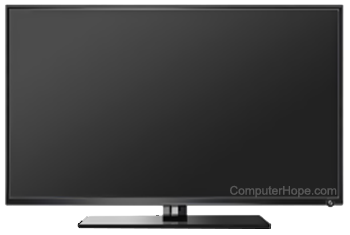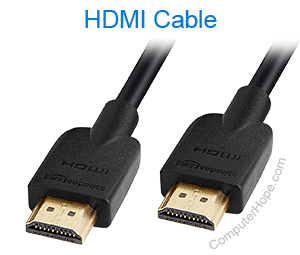No display or black screen on a computer monitor

If your computer monitor displays a black screen and no picture when you turn on your computer, the following steps may help you troubleshoot or repair the problem.
When you encounter video-related issues in Windows, restart your computer's graphics driver with the keyboard shortcut Windows key+Ctrl+Shift+B.
If you have a laptop, see our laptop screen is black page, see: My laptop computer screen is black.
If your monitor initially works when you boot your computer and then goes blank when Windows starts, see: How to fix distorted video after increasing resolution in Windows.
Monitor is not on
It may seem obvious, but first, make sure the monitor is turned on. If you don't see a power LED (light-emitting diode) (blue, green, or orange light) on the monitor's front or bottom, press the power button again. If no light comes on after several attempts, proceed to the next section.
Computer is asleep
If you stepped away from the computer for a bit and returned to a black screen, the computer is likely asleep. Try moving your mouse, clicking the mouse buttons, or pressing any key (e.g., spacebar) to wake it up. If none of those actions work, press the power button.
Loose or improper connections
Another reason for a black screen is the computer isn't communicating with the monitor properly because of loose or improper cable connections. The following steps help you ensure the monitor is connected correctly to the computer.

Check the data cable
Ensure the monitor's data transfer cable is connected correctly to the computer. It should be inserted completely and firmly in place. Older monitors use a VGA (video graphics adapter) cable, but most new displays utilize a DVI (digital visual interface) or HDMI (High-Definition Multimedia Interface) cable and port.
Make sure the cable is connecting to the correct video port. Most new video cards have multiple connections and your motherboard may also have its own connection.
Check the power cable
Verify the monitor has power by looking for a blue, green, or orange light. This light is found on the front or the bottom of the monitor's bezel.
If you see no lights on the monitor, make sure it is connected to a working wall outlet. If the power cord is removable from the back of the monitor, try replacing it with another power cable. If you still cannot turn on the monitor after trying another wall outlet and cable, the monitor is broken and should be replaced.
Check the LED status
If the monitor LED status light is orange or flashing, verify the monitor is not in Standby mode by moving the mouse or pressing Esc. If this doesn't help, reconnect the data cable to the computer and back of the monitor, and then restart your computer.
Try a different cable
If your monitor is getting power, but no image appears, the data cable may be the issue. Try using a different DVI, HDMI, or DisplayPort cable with your monitor.
Turn up the brightness and contrast
If your monitor's settings menu is visible even though the screen is blank, you likely need to turn up the brightness and contrast.
Computer needs to be reboot
If the computer was on when the screen went black, something may have happened that requires the computer to be reboot. To reboot a computer when you do not see anything, press and hold the power button until the computer turns off. A computer is off when it has no lights and the fans are not spinning. Once the computer is off, wait a few seconds and then turn the computer back on by pressing the power button.
No POST
If the computer doesn't pass POST (power-on self-test), it won't turn on or be responsive, and your monitor remains black. If you hear beeping when you turn on your computer or see strange lights, run through the POST troubleshooting steps to determine the issue.
Hardware issue
If you followed the recommendations above and still no picture appears, your computer may have a bad monitor, video card (graphics card), or motherboard. The best method of determining this is to try the suggestions below.
Borrow someone else's computer monitor and connect it to your computer
If another monitor works on your computer, it's safe to assume the non-working monitor is bad and should be replaced. While it may be possible to have the monitor serviced, it is often cheaper and easier to purchase a new one.
Disconnect your monitor and connect it to another computer
If your monitor works on another computer, the video card may be bad. Try removing the video card from the affected computer and installing it in another computer. If it does not work in the other computer, the video card is likely bad and needs to be replaced.
If your monitor and video card work with another computer, your motherboard probably has an issue. Attempt to troubleshoot motherboard problems using the link below. If you determine the motherboard is bad, or tests do not run successfully, we suggest replacing the motherboard to fix the display problem.
Replace the computer's power supply
If the monitor, video, and motherboard are found to not be the problem, the power supply may be faulty or not supplying enough energy to the computer. When a computer does not get enough power, some or all functionality may not work, like not displaying an image on the monitor.
Replace the power supply with a new one having at least the same wattage rating as the original, if not higher. For example, if the current power supply is rated for 350 watts, the new power supply should have a 350 watts or higher rating. Once replaced, see if the new power supply resolves the issue.
